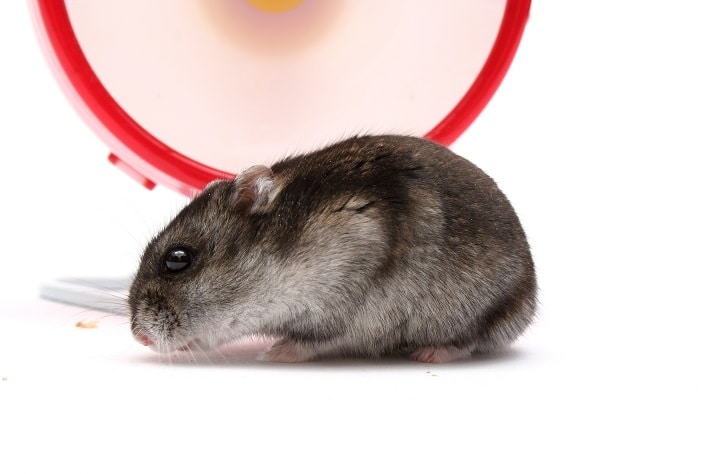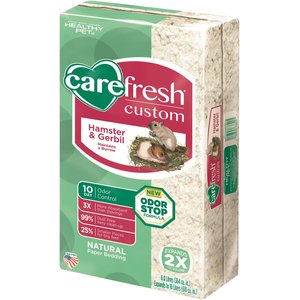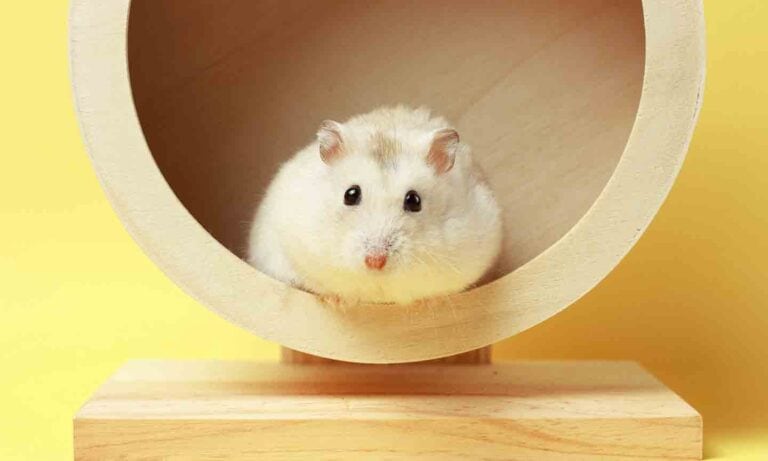Hamsters come in a variety of colors and names, and the Winter White Dwarf Hamster has caught your eye. So how can you tell if this is the best species for you? These 10 facts can help you learn more about this charming breed and make sure he’ll be a good fit for you.
- The Winter White Dwarf Hamster, also called the Siberian or Russian hamster, hails from Siberia and Kazakhstan, and its Latin name is Phodopus sungorus. They are common pets in Europe, Asia and North America—one of the five most popular hamster species in the United States.These hamsters often are confused with Campbell’s Russian Dwarf Hamsters (Phodopus campbelli), which have a similar size and appearance.
- As a dwarf hamster, your Winter White likely will grow to 3-4 inches long, says Erin Ramsey, co-president of California Hamster Association in Southern California and owner of Cheeks and Squeaks Hamsters. They sport a round, oval-looking body shape with fur covering their feet and legs. There are three main color varieties: sapphire, pearl and natural pearl.
- This charming hamster’s coat turns white in winter, thus its name. The rest of the year, Winter White Dwarf Hamsters are adorned in a grey-brown coat color with a dark dorsal stripe down the back. In the wild, this coat change provides camouflage against the snow. The change in color can take a few days to a few weeks, and some people report seeing their Winter White Dwarf Hamsters change in waves from head to tail.The color-change occurs extent to which your hamster’s coat might change during the short, light periods may vary from a few faded patches to a whitening of his entire coat. Lack of exposure to seasonal light cycles usually prevents this coat-color change in captivity.
- Male Winter White Dwarf Hamsters generally are larger than females, and “the male has a more prominent scent gland on the belly,” Ramsey says.
- Winter Whites live an average of 1½-2½ years. They are not particularly prone to any illness, but they can suffer from the same illnesses as other hamsters.
- Generally speaking, Winter White Dwarf Hamsters have a more tolerant personality than Campbell’s hamsters, and they are less likely to bite. Their small size makes them better suited to older teenagers and adults than younger children, but families with youngsters can do great with these hamsters if they put in the time, Ramsey says. “They all have different personalities and are very interesting to watch when in proper habitats. They enjoy play time in a safe playpen and socializing with humans.”What if you share your home with other pets? “Hamsters should never be exposed to other pets,” Ramsey says, “but they do fine in the same environment as long as they are secure in their cage."
- This sociable species is best kept in pairs or groups.“Same sex, same litter usually works out, but they do have a pecking order,” Ramsey says. “If one is more dominant or bullies the other, they must be separated immediately.” The decision to keep a mixed-sex pair or group should not be taken lightly because breeding will occur, and hamster litters can be produced every three weeks. If this is your first time caring for a hamster, Ramsey recommends starting with a solitary hamster.
- For a more successful multi-hamster living situation, introduce Winter White Dwarf Hamsters who will live together at a young age—preferably 5-8 weeks. Even better is if they come from the same litter or shared living quarters. Hamsters who have lived alone may not accept a companion peaceably.
- The best cages for Winter White Dwarf Hamsters offer at least 450 square inches of unbroken ground space, and the bigger the better, Ramsey says. Options include bar cages, aquarium tanks(40-gallon breeder), and bin cages made from 110-quart plastic storage tubs. Use a wire-mesh lid to prevent escapes and injury from falling objects. And because dwarf hamsters can squeeze through the bars of many wire cages, keep bar spacing in mind when choosing your hamster’s habitat.
- Your new pet will love to burrow, so provide your Winter White Dwarf Hamster with soft bedding. You can choose from wood shavings, fluffy bedding and shredded paper, like CareFresh Small Animal Bedding. Ramsey recommends about 4 inches of bedding for your pet to burrow in in his enclosure.
Find More Fun Facts About Hamsters
Share:










